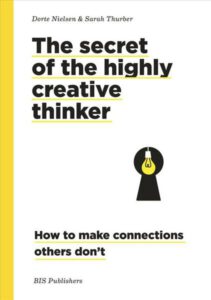“Success Has Two Letters: DO.”
 “Success has two letters: DO.” Ooooh, yes! That’s what creators like. And managers.
“Success has two letters: DO.” Ooooh, yes! That’s what creators like. And managers.
And isn’t it true: Those who talk a lot about projects and do little about them are unlikely to enter the history books of Successful Entrepreneurs.
However, the same applies to those people who always just roll up their sleeves and do, ignoring the equally important preparatory work of doing.
Everyone who works and creates something goes through the same process. This applies, of course, to creative professionals, i.e. all artists, musicians and authors. But even outside the colourful art scene, in the seemingly grey everyday life of a company, we always somehow go through these famous
Three Phases of the Creative Process
- Idea/solution search: analyze, gather input, prepare
- Incubation: digest collected input, let it take effect, let ideas mature
- Implement, move to action, do
(As an Agile Coach, I’d like to add: 4. Showing and getting feedback. And thus back to 1.)
No matter what we work on, and also whether we do it alone or in a team: Professionals take these steps as consciously as possible. They constantly make themselves clear in which phase they are at the moment and what is necessary – now.
This is because each phase serves a specific purpose and requires different prerequisites and approaches.
So you have to keep the order, take adequate time and concentration, complete them neatly as well. Otherwise, there is a great risk of falling short of expectations and possibilities. Or to fail.
So, if you want to complete an assignment as successfully as possible, you will first try to understand what the goal or the underlying problem is. You will also look at different possible solutions (depending on the situation, of course). Even those that are outside of your automatic routines.
What Else Comes To My Mind
- Wikipedia: Creativity
- Luther, Michael: Das große Handbuch der Kreativitätsmethoden.
- Nielsen, Dorte; Thurber, Sarah: The secret of the highly creative thinker. How to make connections others don’t.
- Patton, Jeff: User Story Mapping- Nutzerbedürfnisse besser verstehen als Schlüssel für erfolgreiche Produkte.
- Rustler, Florian: Denkwerkzeuge der Kreativität und Innovation. Das kleine Handbuch der Innovationsmethoden.
- Tharp, Twyla: The Creative Habit. Learn it and use it for Life.
